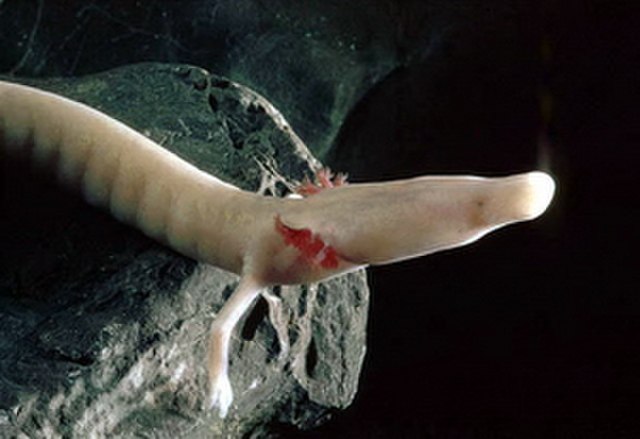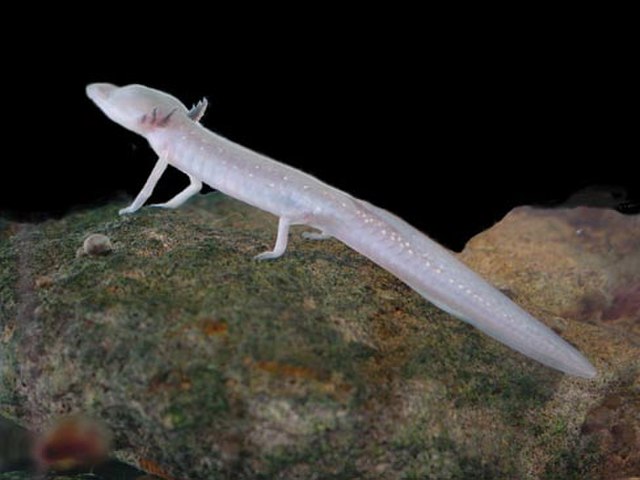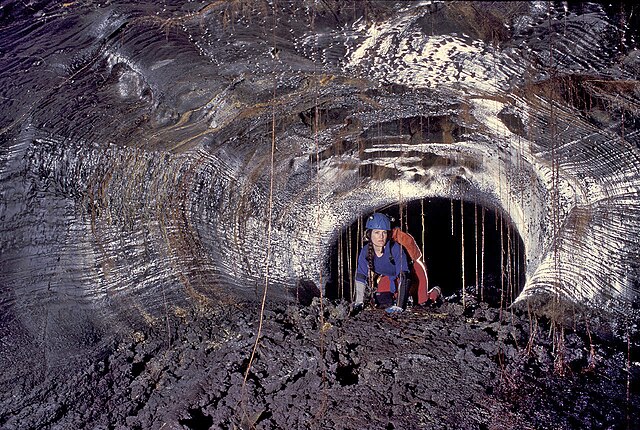A cave salamander is a type of salamander that primarily or exclusively inhabits caves, a group that includes several species. Some of these animals have developed special, even extreme, adaptations to their subterranean environments. Some species have only rudimentary eyes. Others lack pigmentation, rendering them a pale yellowish or pinkish color.
The olm (Proteus anguinus) of the western Balkan Peninsula.
The Supramonte cave salamander (Speleomantes supramontis) of Italy.
The spotted-tail cave salamander (Eurycea lucifuga) of the United States.
The Texas cave salamander (Eurycea rathbuni).
A cave or cavern is a natural void in the ground, specifically a space large enough for a human to enter. Caves often form by the weathering of rock and often extend deep underground. The word cave can refer to smaller openings such as sea caves, rock shelters, and grottos, that extend a relatively short distance into the rock and they are called exogene caves. Caves which extend further underground than the opening is wide are called endogene caves.
Lechuguilla Cave, New Mexico, United States
Speleothems in Hall of the Mountain King of Ogof Craig a Ffynnon, a solutional cave in South Wales.
Exploring a lava tube in Hawaii.
Painted Cave, a large sea cave, Santa Cruz Island, California








